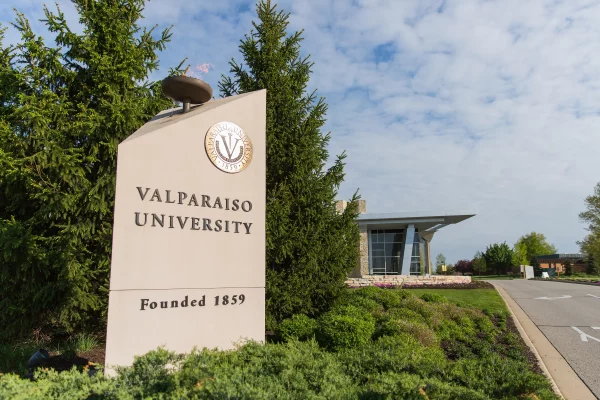Annual engineering conference features undergraduate research projects
The American Society for Engineering Education (ASEE) Illinois/Indiana Section held its annual conference at Valparaiso University on March 17.
Scott Duncan, assistant professor of mechanical engineering at Valpo and 2011 ASEE IL/IN Outstanding Teacher, gave the keynote address at the conference. Duncan’s research involves using solar energy as an alternative fuel source. The James S. Markiewicz Solar Energy Research Facility, under construction now at Valpo, contains the only solar furnace found at an undergraduate institution in the United States.
The conference featured peer-reviewed papers and workshops on a variety of topics, including innovative teaching methods and curriculum design, multidisciplinary approaches, emerging educational technology, alternative/sustainable energy, and undergraduate research. Student posters highlighting achievements in undergraduate research were also presented, including five posters by Valpo students.
* Justine Barnes presented her research project in civil engineering, titled “An Investigation of Concrete Properties in Support of International Testing Standards.” Barnes’ research examined two of the standard processes for concrete testing, comparing both to determine if a correlation existed between tests conducted on surfaces with different inclinations.
* Riley Albers, Rachel Coulter, Derek Egley, David Jung, and Adam Whitmer presented their research in electrical engineering, titled “Proximity Sensor Assist for the Visually Impaired.” The objective of their project was to create a system to aid visually impaired people in navigating their environment.
* Andrew Schiller, Matthew Gaide, and Tyler Heagney presented their research project in electrical engineering, titled “Jewelry Box Assembly System for an Individual with Disabilities. The goal of their project was to design, manufacture, and implement a semi-automated system to assist a person with disabilities in the assembly of jewelry boxes. The system was implemented at the non-profit organization, Opportunity Enterprises, of Valparaiso, Ind.
* Kyle Zobeck, Erick Bodett, Marjorie Ballun, Bruce Williams, Craig Goehler, and Kathleen Sevener presented their research project in mechanical engineering, titled “An Improved Method for Quantifying the Stiffness of Running Shoes.” For this study, a modified flexion test and test apparatus were developed to find a better way to quantify shoe stiffness. Future work will examine the effects of flexion locations, shoe wear, and higher loading rates on shoe stiffness.
* Bethany Powell, Ryan Post, Bruce Williams, Kathleen Sevener, and Craig Goehler presented their research in mechanical engineering, titled “A Study on the Effects of Shoe Architecture on Impact Forces during the Gait Cycle.” This study expands on a previous study that examines the forces on the foot during the gait cycle, comparing two different shoe architectures: flexible and stability.
Barnes, a junior civil engineering major from Rochester Hills, Mich., worked with John Schemmel, associate professor of civil engineering, in her research, which she said will help prepare her for graduate school.
“The work Justine performed is being reviewed by a subcommittee of ASTM International,” said Schemmel. “This organization publishes standardized testing procedures to evaluate a wide range of materials and products. Justine’s work examined a method used to test concrete at a job site, and her results will very likely impact the manner in which this particular test is conducted in the future.”
Bodett, a junior mechanical engineering major from Seneca, Ill., said that participating in this undergraduate research project has given him valuable experience for future internship positions.
“The conference was a great experience to see the work that other undergrads were doing, and getting to show what we had been working on as well,” said Bodett.
“Undergraduate research can greatly enhance the educational experience for a student,” said Schemmel. “It provides the student an opportunity to apply the concepts and theories learned in the classroom to a real world issue.”
